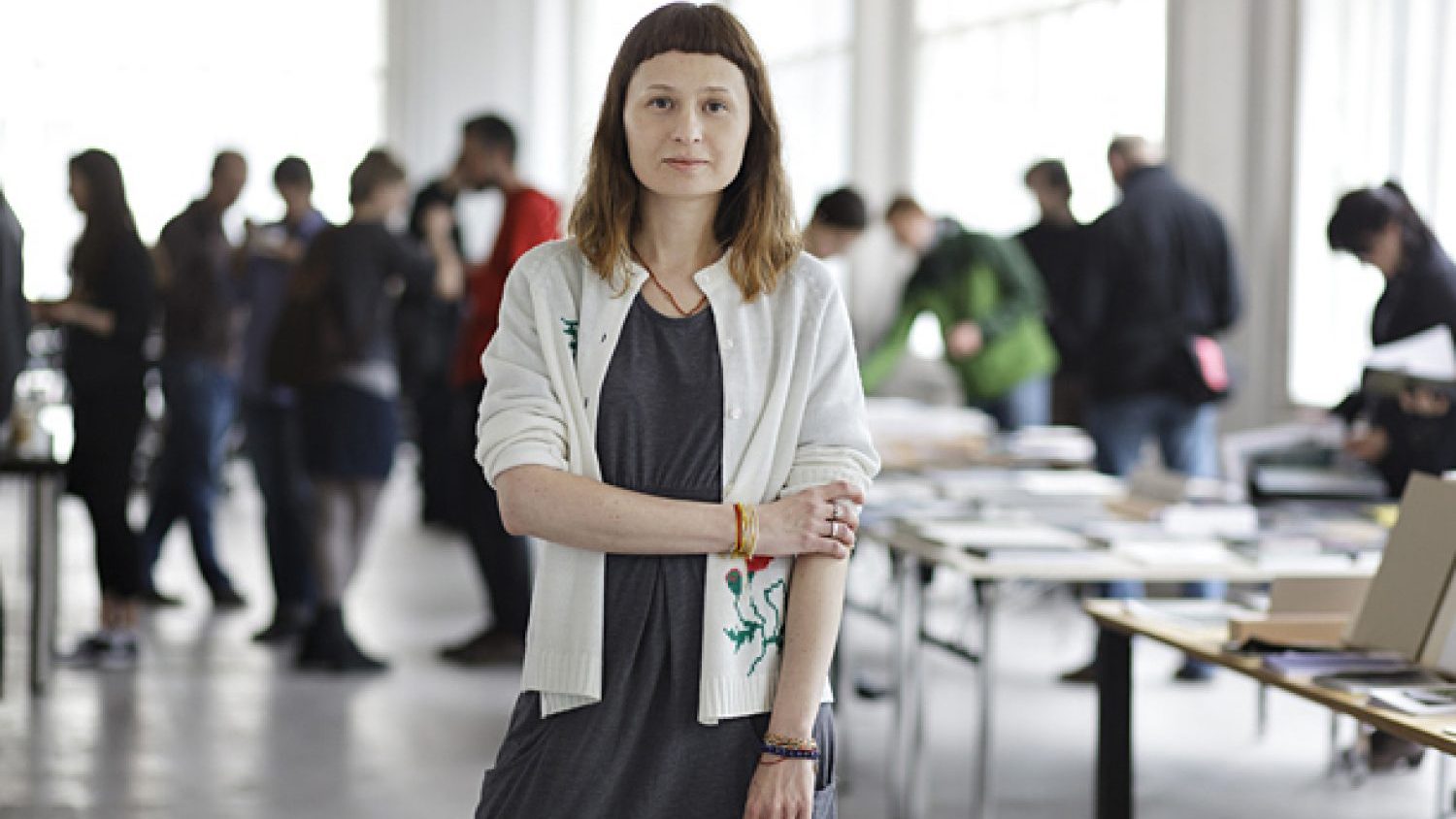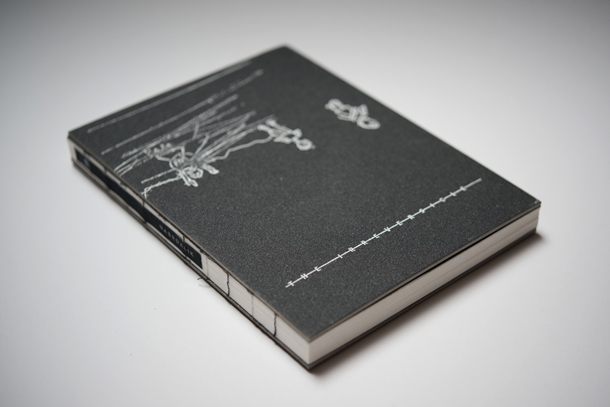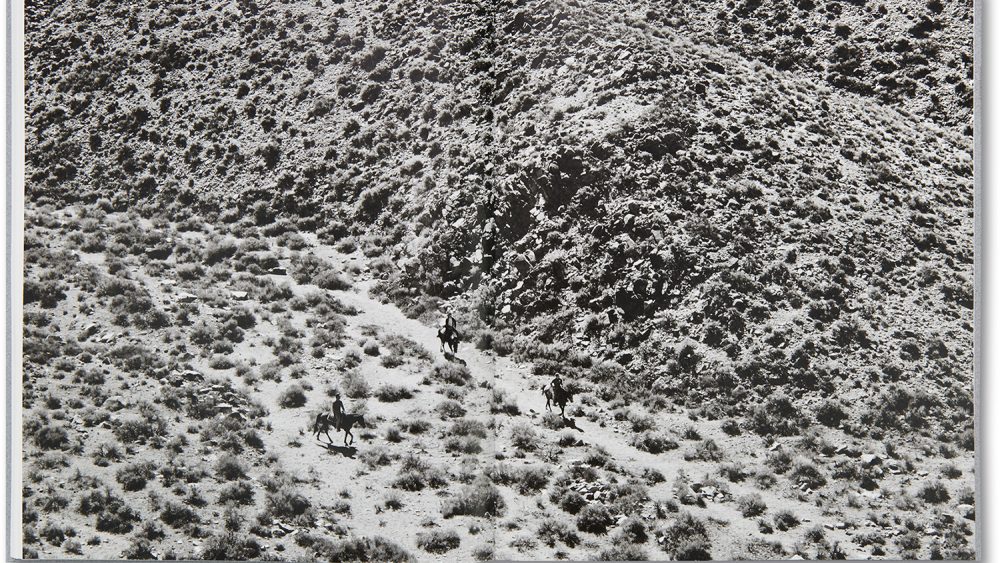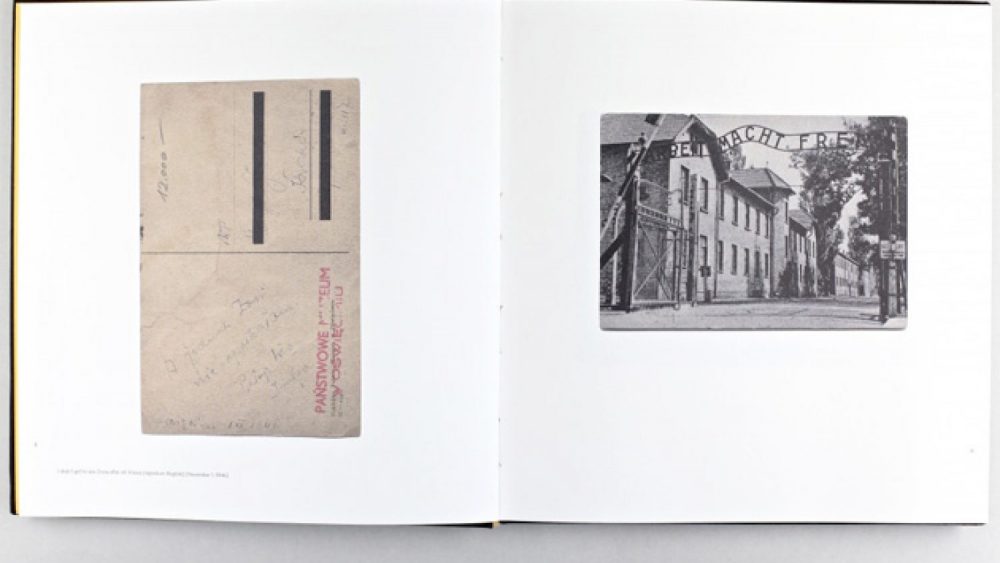Interview with Ania Nałęcka
Ania Nałęcka is is a graphic designer, art director and book designer at Tapir Book Design, collaborating with Sputnik Photos collective, based in Warsaw, Poland. Among others, she has designed the books 7 Rooms, Black Sea of Concrete, In the Car with R by Rafał Milach, Swell by Mateusz Sarełło and IS(not), At the Border, Stand BY and Distant Place by Sputnik Photos.
Books designed by Ania have been awarded the 69th and & 71st POYi The Best Photography Book Award (first prize in 2011 and first prize in 2013), ParisPhoto/Aperture Foundation Photobook Award (2012 and 2013), The New York Photo Festival (first prize in 2011), Photography Book Now (2009 grand prize and 2011 first prize), Art Books Wanted International Award (2013) and Publication of the Year, Fotofestiwal in Łódź (first prizes in both categories, 2013). She has also co-curated Sputnik Photos’ exhibitions Stand By and Distant Place, Photo-eye for Best Books of 2012 (best books by Sputnik Photos) as well as the Curated Bookshelf with Foam Museum in Amsterdam.
This year Ania visited Latvia twice – first being one of the jury members for the Self Publish Riga photobook dummy competition, and secondly, teaching the masterclass The Photobook: from Idea to Completion together with Rafal Milach and Nico Baumgarten at the ISSP 2014.
What have you learned about bookmaking and what tips can you give to people who are interested in making photography books?
I try to share my own experience. The first question I would ask myself or a photographer who comes to work with me: why do you want to make a book? You are choosing a specific media and it should be a conscious decision. If you have a body of work, you can also present it as an exhibition or make a slideshow. It might sound aggressive, but that’s the first question.
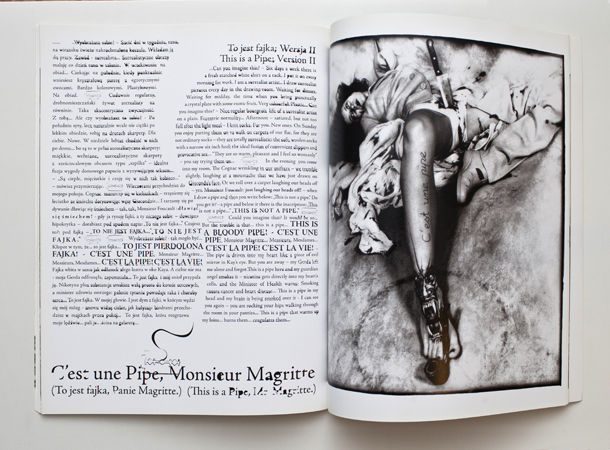
Do you think a lot of photographers make books just for the sake of making them?
Yes, because it is a sort of trend. Ok, I finished the project and now I have to make a book. For me not every project works as a book, but sometimes it can add something. There are some photographers who start their projects already thinking about a book.
The second thing, which I found very liberating for myself and any other creative person, is that there is nothing new under the sun. We don’t have to try to reinvent the book. I strongly believe that everything has been done before, even if I don’t know about it. Probably in the 20s of the last century. So don’t try to be very unique or to surprise everybody by coming out with something very special, new and exciting. You have to realize that you are part of a very long tradition of making books, of the wider scene of this medium. Of course, there have been photography books since photography was invented, but you also have to think about books in general – art books, literature. I really think that the photobook is somewhere between a telephone book and a poetry book. When getting into doing things, sometimes we forget about the basic stuff. The first thing for me as a designer is – the form has to follow the message. The message is the most important. So we don’t start from: OK, I saw a book with a nice cover, let’s do something like this! You have to start from “why” and then find a proper execution. Another thing I face is that sometimes the photographer has been working for years on the project, and for him it is so obvious that it becomes very difficult to summarize it in a few words, to really explain what you want to say. Of course, there is a saying that a picture is worth a thousand words, but it is crucial to choose these, let’s say five words. Because then I have something to start with, and in the process I can always go back and check if we are still on the path we should be on. And it’s also useful for the photographer to be really precise about what he wants to say.
Never be afraid of changes. You get used to the first idea, but if it doesn’t work or if we are too far from what we want to say, or want to say something differently, I can change it, because it’s only in the process that I can evaluate my approach. Even if you have booked the printer, there is still time to change things.
Sometimes when you make changes you have to say “no” to things you have got attached to already.
I think it’s the same with editing pictures – you are so used to a sequencing or group of photos, but you have to reject some of your favorites when you work on the book. It’s very easy to get used to the idea you feel safe with. Of course, we are looking for safety in everything. But don’t be afraid to change your idea, because it’s worth it, even if you go back to the first version. This roundabout approach sometimes makes your first decision more valid.
You have the idea, you don’t know if it has been done before or not, you are just trying. An example is the book The Irreversible by Agnieszka Narbdalik. The subject is very uneasy – people who survived Nazi camps. On one hand, we know so much about it, we learned about it in school, we read books, but on the other hand, it’s not an easy subject, it’s not comfortable.
It’s kind of unspeakable.
Yes. So we had the idea of making a book that’s not easy, that’s not comfortable – we made the cover out of sandpaper. Something that you don’t want to touch. You wouldn’t put it with your favorite books on the shelf, this book needs a special place. Sure, someone made a cover out of sandpaper before, but for me it was about this whole process – finding a bookbinder, looking for special paper. On the conceptual and formal level, you have the idea, you have the message, you know what you want to say and you are looking for the way to do this, not the opposite.
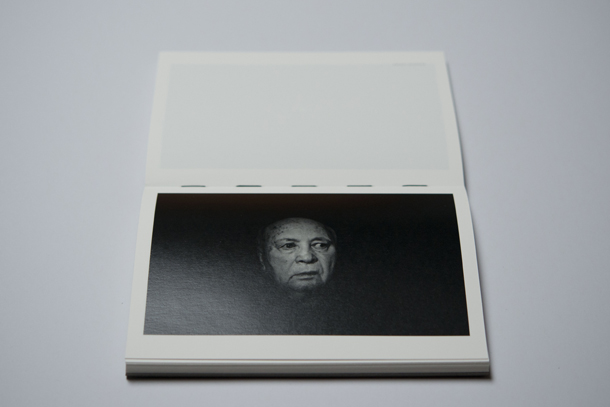
Do you ever feel tempted when you see something that looks really interesting design-wise, to try and do something similar?
No, not really. Of course, I probably felt this many times, but I really try to have this dogma. Sometimes I think: oh, this is a really nice idea formally, but I’m really waiting for the proper project for it, not the other way around. That’s the only way, I would say. The other thing I don’t personally believe is as a designer, I am also an author. I don’t think that ideas come from me. I believe there is a collaboration, we met and talked and the idea appeared. I strongly believe that there is potential and my job as a graphic designer is to understand it, and if I understand the potential, all these decisions – formal and conceptual – are just a consequence of this potential. I really believe that if someone works on a project for five years, there is everything there. I try to be kind of a tool for photographers.
It sounds very modest.
No, no, I have my ego. A strong one. But I really believe that [the book] is not my message. My job is to listen. If I fail, the book is not going to be well done. I had a presentation in Poland and afterwards a graphic designer approached me and said: “So your job is something like a psychologist”. I really feel that way. I believe in a kind of construction. Not only as an object, but also message-wise, [a book] is a structure. The idea is to understand and to feel it. I talk a lot about this logical stuff, but I really work very intuitively, I think a lot about the feeling. For me it is really important to see the author and talk to him, to see how he is as a person, because for me it would be a failure to make a book which is not connected to the author. Even if it’s very objective, classical storytelling where the subject is separated from the author. I cannot make a book where you see the book, see the author and you cannot see the connection. An ideal example for this is the book Swell by Mateusz Sarello, where he was transferring himself as a person in the book. I was really asking: is it you or not you? Because it was a very personal project about his emotional life, him breaking up with his love, his girlfriend.
What else? I always talk about the construction, conception, all these little solutions, but in the end photographs are the most important. [Designing the book] is like making the frame for photography. You can use it wisely, you can add some elements to guide the viewer, you can provide hints on how to read the project, but really it’s ten percent (from the whole work). By all means, try to avoid design. There really is no place for additional aesthetic stuff that doesn’t enrich the the project. I really like layers, and when you are discovering the book slowly, time is needed to find some little details, but it still has to be readable and understandable. I don’t really believe in the approach: this is my vision, I don’t care if you understand it or not. You need to respect the viewer. And I don’t really believe that there is a recipe how to make a book. Each photographer is a different person, each project of the photographer is individual. On one hand it’s an adventure. It can be stressful sometimes when you are standing in front of a blank page. You cannot predict how it’s going to go and you cannot plan for it to be success.
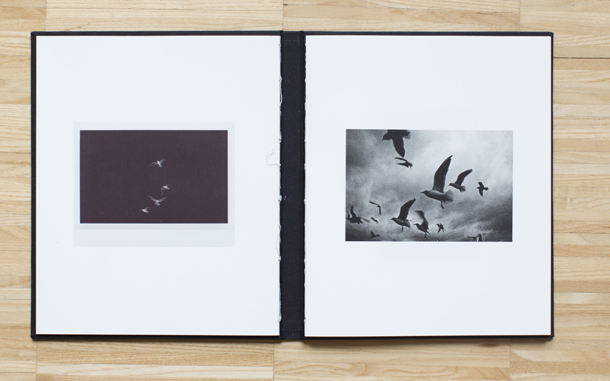
When I interviewed Markus Schaden, he said that now there are so many photobooks that sometimes it’s more interesting to see books that break the rules, that turn things around, don’t give you what you expect. What do you think about this?
Yes, I think it has always been that way. There is a difference between observing reality or copying someone. If you are observing, you don’t give a shit about the rules, because you are seeing sincerely. It’s some kind of personal truth you are telling. Even if it’s out of the box, people will believe you, they will follow. I believe in this kind of sincerity.
There are images around us all the time, so sometimes we might copy other images without even realizing it.
Of course. But now I will contradict what I said previously – that there is nothing new. On one hand, you are trying to find a truth for yourself, but on the other hand you know that you are part of a much bigger scene and it’s good to know the context. If you are trying to make a red book and you know that there were a lot of red books before, but if it really fits your story, it’s not an issue. It isn’t “let’s not do this because it has been done before”. We are always between all these extremes, the wisdom is to find yourself somewhere in between them. To have a strong vision of where you are heading helps. Each person has his own point of view, but in the end you are the one who makes the decision.
You used to work as a graphic designer in a commercial design agency. How did you get involved in book design?
I was an art director, making videos, campaigns, which was very educating for me, because I got a background in how to deal with an idea first. You have an idea, and then you think – let’s make a movie out of it. OK, a movie doesn’t make sense, let’s make a poster or whatever. But everybody knows what the advertising world is like. I have friends who are still dealing with it and they are very good. I was not strong enough. It came to the point when I said: I cannot do it anymore, it’s too much. I quit.
I always wanted to make a book. Before that I had only made one book – Love Book. The Best of my Dreams by Sławomir Rumiak. Right after my graduation. I was really, really lucky that it was the time when this [photobook] boom started. My boyfriend Rafal Milach also came to the point when he started to think about making a book. And Sputnik Photos, which I work with, started to think about converting their works into books. The situation was really well synchronized. I don’t know how it would have been if I wanted to make books ten years ago or twenty years in the future, but I was really lucky. I’m just a lucky person (laughs).

You have worked a lot together with Rafal. How is it?
For us it was very natural process, and I think we both learned a lot during it. I learned how to talk to photographers. For the first book, straight after working in advertising, I really needed a clear message. I was asking why this and why that. He didn’t have a clear message yet, he had just finished the project. I had to learn how to ask and he – how to have this clear message. It cannot be a thousand words. It has to be one simple thing that we can start with. Of course, we can elaborate later, but there has to be this core message. Rafal is also educated as a graphic designer, we studied together. Somehow with each next book I started to talk more about photography and sequencing, and he was thinking about designing, it felt very natural. Regarding his latest book The Winners, I’m credited in the book, but I was more a consultant, as it’s mostly his idea. Of course, we talk a lot and from these talks solutions appear. I feel like part of it, but I don’t take the credit.
Do you have a lot of photographers approaching you and asking you to work with them on their projects?
Usually in Poland I don’t really feel comfortable with it. Photographers in Poland approach me because they don’t know other designers, they could probably work with someone else. I really like that some people approach me because they know my work and like the way I work. Not just because – I need a designer and I’ll go to her because she knows how to print the book. Somebody should choose me not because I know how to work with InDesign, but because they know how I work.
